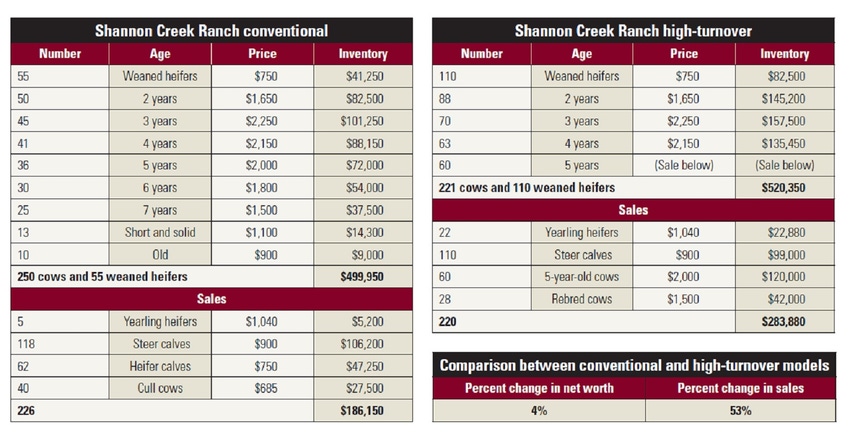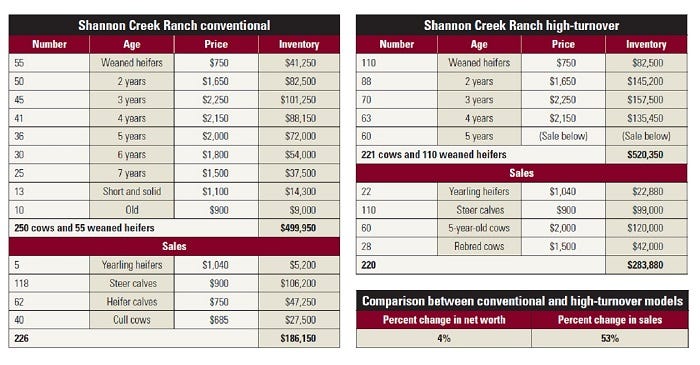
The ideas Oklahoma rancher Wally Olson shared about improved cow marketing a couple years ago in Beef Producer have traveled far and wide, but some folks still need to see the potential profitability from the concept of a real “no-depreciation” cow herd.
To that end, Olson recently shared some data that he and a family member worked up using the family member’s ranch and his efforts to avoid cow depreciation and capture cow appreciation.
The numbers in the no-depreciation herd chart, labeled here as the high-turnover herd, are projected based on stocking rates, but the pricing is from real sales of cattle by the ranch in 2019 or of cows that size and type at nearby sale barns at that time.
Big sales boost
Here’s how it came out: On a 250-cow ranch, the change in cow marketing improved inventory value by about $27,000 or 5%, and increased annual sales by almost $98,000 or 52%.
It works this way: Cows actually appreciate in value until they’re about 5 years old, and then depreciate after that. Olson calls this the cow bell curve.
Once a cow begins to depreciate, in real financial terms you must deduct that depreciation against the value and profit of a calf she produces. Put simply, that cuts into your true profit margins.
On the other hand, if you sell cows about the time they are at their peak value around 5 years old and keep larger numbers of replacement heifers, you will avoid that depreciation “drag” on your calf prices and also increase your inventory value and the total dollar volume of sales.
See the chart
Look at the chart of Shannon Creek Ranch inventory value for the conventional operation with stratified cow ages and small numbers of replacement heifers. We’ve supplied this as the main artwork for the story, as well as another version to help you in this website format.

You will see the inventory value of the 250 cows and 55 weaned replacement heifers is $499,950. Below that you’ll see the sales returns are $186,150.
Now examine the inventory value of the high-turnover version of the same ranch. With 221 much-younger cows and 110 weaned heifers, creating the same calculated stocking rate, you’ll see a value of $527,100. This is just a little more than 5% higher inventory value. Look below that at the sale income of $283,880 for a much younger mixture of cattle. This is a little more than a 34% increase in income for the ranch.
The mix is different because of the type of animals kept. Obviously, the ranch would have more yearling replacement heifers that didn’t get bred. The few open cows are kept longer, improved in body condition, bred and sold as bred cows, thereby increasing their value. Remember that the numbers are estimated based upon setting the same stocking rate.
About the Author(s)
You May Also Like




